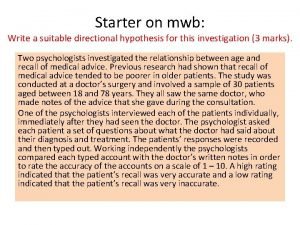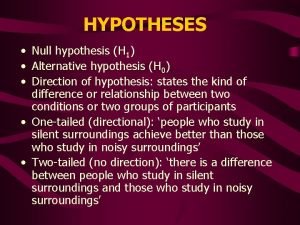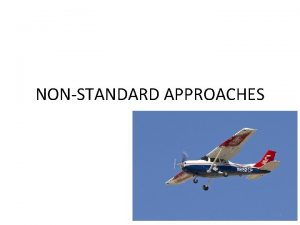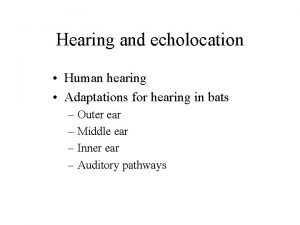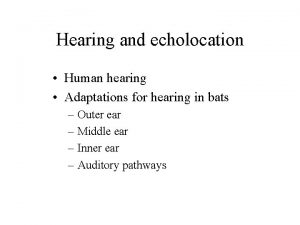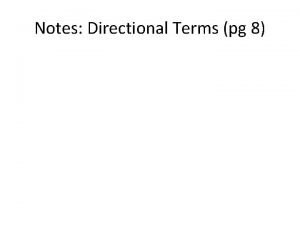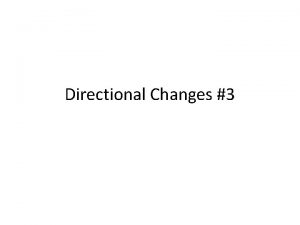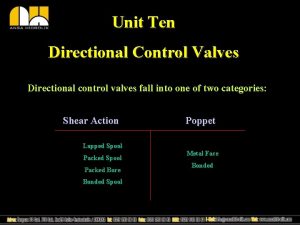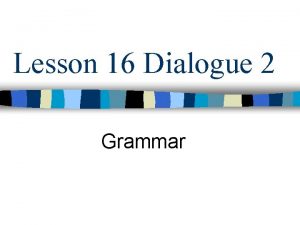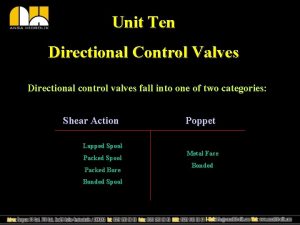DIRECTIONAL HEARING Study aid for learning of Communications



















- Slides: 19

DIRECTIONAL HEARING Study aid for learning of Communications Acoustics VIHIM 000 Prof. Fülöp Augusztinovicz BME Dept. of Networked Systems and Services fulop@hit. bme. hu , Budapest

Basics of the directional hearing § Two differences: • inter-aural time difference, ITD • inter-aural intensity difference, ILD § Implication: • Distinct transmissions from source to left & right ears • Ratio of the two FRFs: HRTF (Head Related Transfer Function)

Basics of directional hearing § Geometry of directive hearing frontal plane horizontal plane sagittal plane

Directional hearing § Operating mechanisms for various frequencies: • For low frequencies the relative intensity differences are not relevant (due to the diffraction effect) • For high frequencies the phase differences are not relevant/useful, if the travel time delays are in the order or magnitude of the wavelength, or higher Therefore • For low frequencies it is ITD while for high frequencies it is ILD which is more appropriate • Unfortunately, according to newer experiments the problem is not so simple

HRTF § Source at -60°, transfer function to the two ears right ear left ear

Problems with application of HRTFs § The „world” rotates together with the headset/user § Solution: head tracker

Ensuring directional hearing: binaural recording/playback

Artificial head § For sound recordings and high-fidelity measurements (primarily in NVH)

Directional hearing aids Előadás címe © Előadó Neve BME Hálózati Rendszerek és Szolgáltatások Tanszék 9

A short history of stereo sound recording § 1877 First recording by Thomas A. Edison, Mary Had A Little Lamb. § 1888 The Gramophone, invention of Emile Berliner, American inventor: the flat record § 1898 Invention of the magnetic sound recording (Valdemar Poulsen, Denmark) § 1931 Stereo record (inventor Alan D. Blumlein, US) § 1933 Bell Labs realizes the first stereo concert broadcast on a telephone line from Philadelphia to Washington § 1940 Walt Disney first uses stereo sound for his movie Fantasia c. § 1954 The stereo tape recorder is commercialized for home users § 1958 Stereo LP record by using V-cut § 1961 Outset or stereo radio broadcast § 1969 Outset of the quadrophone (4 -ch) radio broadcast § 1970 Record industry changes entirely to stereo technology

Some early recorders http: //en. wikipedia. org/wiki/Phonograph_cylinder Előadás címe © Előadó Neve BME Hálózati Rendszerek és Szolgáltatások Tanszék 11

Mono Sztereo

Stereo microphone techniques Coincident method Distinction is given by differing directional characteristics of mics Nearly coincident method Faraway configuration Distinction is given both by differing directional characteristics of mics and phase deviations Mics record nearly independent signals

Directivity patterns of microphones supercardioid omnidirectional cardioid bidirectional (eighter) highly directional (mic gun)

Stereo microphone techniques § XY microphones (intensity stereophony)

Stereo microphone techniques § M-S (mid – side) microphone

Stereo microphone techniques § Nearly coincident: the Jecklin. disc

Stereo microphone techniques § A-B microphone configuration

Highly directive microphones
 Hypothesis starter
Hypothesis starter What is directional and non directional hypothesis
What is directional and non directional hypothesis Directional hypothesis example
Directional hypothesis example Directional and non directional hypothesis
Directional and non directional hypothesis Formulating and clarifying the research topic
Formulating and clarifying the research topic Directional and non directional hypothesis
Directional and non directional hypothesis Directional and non directional hypothesis
Directional and non directional hypothesis Safetymri
Safetymri Dha
Dha Dr amir soltani
Dr amir soltani Count the dot audiogram
Count the dot audiogram Flyte hearing aid reviews
Flyte hearing aid reviews Radar approaches
Radar approaches First aid merit badge first aid kit
First aid merit badge first aid kit Green hill park medical centre
Green hill park medical centre Cuadro comparativo entre e-learning b-learning y m-learning
Cuadro comparativo entre e-learning b-learning y m-learning Iso 22301 utbildning
Iso 22301 utbildning Novell typiska drag
Novell typiska drag Nationell inriktning för artificiell intelligens
Nationell inriktning för artificiell intelligens Vad står k.r.å.k.a.n för
Vad står k.r.å.k.a.n för
